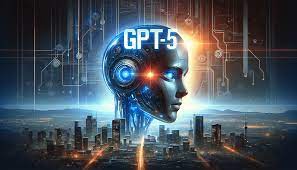Introducing GPT-5: Unleashing New and Enhanced AI Capabilities

Introduction
GPT-5 marks a significant milestone in the evolution of artificial intelligence, representing the latest breakthrough in natural language processing and machine learning technology. Developed by OpenAI, GPT-5 builds upon the success of its predecessors, offering new and enhanced capabilities that promise to revolutionize AI applications across industries and domains. In this article, we delve into the features, advancements, and potential impact of GPT-5, exploring its role in shaping the future of AI.
Evolution of GPT-5
Background: GPT-5 builds upon the foundation laid by its predecessors, GPT-1 through GPT-4, which have made significant contributions to the field of natural language processing. Each iteration of the GPT series has introduced new features, improved performance, and expanded capabilities, paving the way for more sophisticated AI systems.
Key Advancements: GPT-5 incorporates several key advancements, including enhanced language understanding, improved context modeling, and better performance on a wide range of natural language tasks. These advancements enable GPT-5 to generate more coherent, contextually relevant responses and exhibit a deeper understanding of human language and intent.
Features of GPT-5
Multimodal Capabilities: GPT-5 introduces multimodal capabilities that enable it to process and generate text, images, audio, and other forms of data seamlessly. By integrating multimodal inputs, GPT-5 can analyze and generate content across multiple modalities, enhancing its versatility and applicability in diverse contexts.
Contextual Adaptation: GPT-5 excels at contextual adaptation, allowing it to understand and generate text in specific domains, genres, or styles. Through fine-tuning and customization, users can tailor GPT-5 to perform specialized tasks, such as writing news articles, composing poetry, or generating code snippets, with remarkable precision and fluency.
Applications of GPT-5
Content Generation: GPT-5 is capable of generating high-quality, contextually relevant content across a wide range of formats and genres. From writing articles and essays to composing music and designing graphics, GPT-5 empowers users to create engaging and impactful content with ease.
Conversational Agents: GPT-5’s conversational capabilities make it an ideal candidate for building chatbots, virtual assistants, and other conversational agents. By simulating human-like interactions, GPT-5 can engage users in natural language conversations, provide personalized assistance, and answer questions on a wide range of topics.
Impact on Industries
Media and Entertainment: GPT-5 has the potential to revolutionize the media and entertainment industry by automating content creation, enhancing storytelling capabilities, and personalizing user experiences. From generating news articles and movie scripts to creating immersive virtual worlds, GPT-5 opens up new possibilities for content creators and storytellers.
Healthcare: In the healthcare industry, GPT-5 can support clinical decision-making, patient communication, and medical research. By analyzing electronic health records, medical literature, and patient data, GPT-5 can assist healthcare professionals in diagnosing diseases, recommending treatment options, and conducting medical research at scale.
Conclusion
In conclusion, GPT-5 represents a significant leap forward in AI technology, offering new and enhanced capabilities that promise to transform industries, empower users, and advance human-machine collaboration. As GPT-5 continues to evolve and expand its reach, it holds the potential to revolutionize how we interact with technology, generate and consume content, and solve complex problems in the years to come.
============================================





